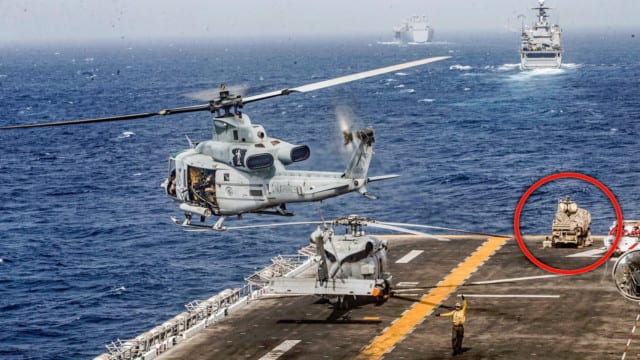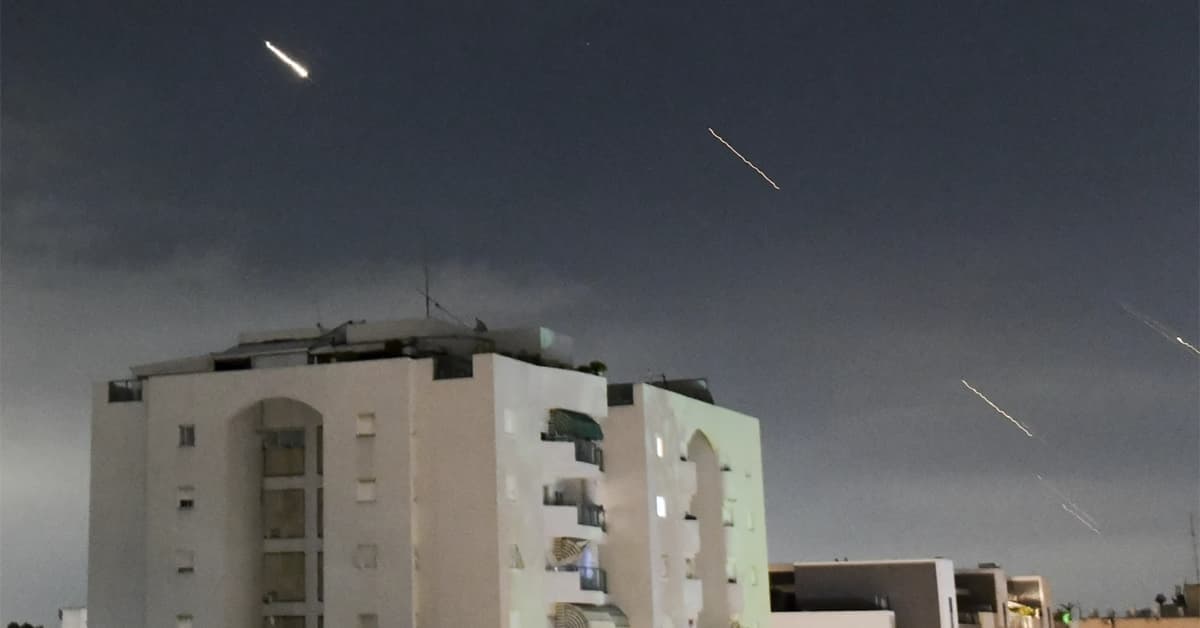In situations such as this incident, and in the previous one last month when the Iranians shot down a U.S. drone⏤in both cases these were at the very least airborne espionage missions, i.e.; “spying.” Both America and Iran understand fully the potential consequences and impact in the shoot down, again, by either side⏤both political and military. Spying is a necessary requirement and capability that throughout history carries with it both consequences as it pertains to a nation’s national security⏤we do it, they do it.
Spying in fact, is the world’s second oldest profession, hence, that’s how far back the trade goes. Espionage, over the course of history has evolved into; who can by whatever means necessary and through the most covert and clandestine of methods of secrecy and of stealth can get closest without being detected and get away with. I for one, can speak volumes about that. It should be understood that drones for the most part, are in nearly every case essentially “unmanned throw-a- ways” designed to avoid the likelihood of and the consequences of pilots and, or crews being captured or killed when shot down. It also avoids the greater chances of going to war, as in situations like this. Reason, because both sides know this. Of course, in the Iranian drone’s downing today by U.S. counter-drone electronic countermeasures, both confused and caught Iran of guard. They didn’t know what happened to their drone and are to this point denying that the drone is missing.
So let’s first look into the details of what actually occurred and how this all played out. As the Pentagon first reported, U.S. Navy and Marines crew members on the Wasp class amphibious assault ship USS Boxer knocked down an Iranian drone that came within the “threatening range” as the ship sailed through the volatile Strait of Hormuz. The Navy report that a U.S. Marine all-terrain vehicle with an anti-drone detection and jamming system sitting on the ship’s flight deck brought down the unmanned aircraft using an electronic warfare attack capability.
As most were made aware, President Donald Trump was first to announce that Boxer had taken defensive action in the Strait of Hormuz during a press conference at the White House on Thursday. The Pentagon subsequently released a statement regarding the incident. The amphibious assault ship, which is carrying elements of the 11th Marine Expeditionary Unit, was sailing in a convoy at the time that also included a Harpers Ferry class dock landing ship, an Arleigh Burke class destroyer, and the Expeditionary Sea Base ship the USS Lewis B. Puller, a highly specialized vessel. A Henry J. Kaiser class underway replenishment oiler was also present for at least a portion of the voyage. The first-in-class USS Harpers Ferry was likely the dock landing ship that was sailing with Boxer as that ship is presently assigned to the Boxer Amphibious Ready Group. The USS Puller, one of the Navy’s main anti-mine warfare platforms, which is capable of supporting MH-53E Sea Dragon mine-sweeping helicopters, is permanently deployed to the Middle East region.
Just before 10 am, the Boxer took defensive action against an Iranian drone, which had closed into a very, very near distance, approximately 1,000 yards, ignoring multiple calls to stand down, and was threatening the safety of the ship and the ship’s crew. The drone was immediately destroyed, as President Trump stated.
The Pentagon’s complete statement, from chief spokesperson Jonathan Hoffman, was as follows: So far, Iran does not appear to have confirmed or denied the incident. Iran’s Foreign Minister Mohammad Javad Zarif told reporters that he had “no information” to offer.
Neither the President nor the Pentagon has, so far, identified the drone in question. Iran operates a wide array of different fixed-wing unmanned aircraft of different sizes. Iran has armed some of these designs, but was not determined if the drone in this case appeared to be carrying any external weapons, or was an actual identified kinetic weapon itself other than it came with in too close a distance to as designated by the U.S. Navy Rules of Engagement (ROE).
Even without external weapons, the drone could have presented a real threat to the Boxer and personnel on board, either by acting as a loitering munition or otherwise harassing, or interfering with the ship’s operations, especially the launch and recovery of any aircraft or helicopters from its flight deck. A mass drone attack, to say nothing of one from an actual swarm of unmanned aircraft networked together, could overwhelm the defenses on even the most heavily defended ship and wreak havoc.
Reports as of last evening state that personnel used a “soft-kill” electronic warfare attack rather than a missile, such as the ship’s RIM-116 Rolling Airframe Missiles (RAM), or a gun system, such as the Phalanx Close-in Weapon System (CIWS). That said the system used was the system known as the Marine Corps’ new Light Marine Air Defense Integrated System (LMADIS) as highlighted in the pictures showing a specially configured 4×4 Polaris MRZR associated with LMADIS on the ship’s forward flight deck.
 Iran’s use of drones to harass U.S. ships, as well as aircraft, in the Persian Gulf is hardly new and it has largely taken the place of the much riskier practice of doing so with small, manned boats. In 2016, Iranian forces notably flew very close to the Nimitz-class aircraft carrier USS Dwight D. Eisenhower and her associated strike group. The Iranians regularly release video from these flights, especially of major warships, such as carriers, for propaganda purposes.
Iran’s use of drones to harass U.S. ships, as well as aircraft, in the Persian Gulf is hardly new and it has largely taken the place of the much riskier practice of doing so with small, manned boats. In 2016, Iranian forces notably flew very close to the Nimitz-class aircraft carrier USS Dwight D. Eisenhower and her associated strike group. The Iranians regularly release video from these flights, especially of major warships, such as carriers, for propaganda purposes.
However the Boxer’s transit through the Strait of Hormuz comes at a time of particularly high tensions between the United States and Iran. In June 2019, things took a particularly worrying turn when Iran’s Islamic Revolutionary Guard Corps (IRGC) shot down a Navy RQ-4A Broad Area Maritime Surveillance Demonstrator (BAMS-D) drone flying over the Gulf of Oman. The United States almost retaliated by striking targets in Iran.
In addition, there have been a number of attacks and other incidents linked to Iran involving commercial oil tankers in the region in recent months. Earlier on July 18, 2019, the IRGC had announced that Iran had detained the Panama-flagged tanker Riah over alleged fuel smuggling.
With the recent escalating events on the part of Iran in the Persian Gulf region, it is not surprising that, the Navy has integrated more advanced capabilities and other components of the layered force protection capabilities U.S. Navy ships can employ while passing through these kinds of high-risk choke points and lines of communications.
While Iran’s efforts may appear more provoking, the electronic downing was warranted with regard to our Navy’s ROEs. Similarly, the shoot down last month of our drones was equally justified by Iran because we were spying on Iran⏤if you don’t believe it, you are in denial, or just plain clueless about spying and espionage.
Strategic Analysis
Understand, the U.S. drone was in fact exfiltrating Iranian airspace as it was crossed into international airspace. Iran was in its right to shoot it down. We for classification reasons, denied and protested the downing. That’s SOP — and until Iran can provide proof otherwise, we did what we do. We denied it, protested and at the same time accepted the fact, and the likelihood of the U.S. going to war with Iran was never in the picture. Just as Frances Gary Powers was shot down in his U-2 nearly 60-years ago⏤we didn’t get in to a war with the Soviet Union. Likewise, we don’t intent to with Iran.
Iran is in a desperate situation internally. The U.S. sanctions are taking its toll on the country and the Iranian government is feeling the impact both across the nation itself and in its ability to conduct external operations mostly its asymmetric warfare effort in the region.
Currently Iran unable to provide the necessary strategic support to its surrogates in Yemen, Africa, and the region to include Hamas and Hezbollah. This is creating uncertainly to its allies and its ability to interfere with and threaten its adversaries. At this point its propaganda machine is in full operational mode as we witnessed Minister Zarif at the United Nations on Wednesday state that the U.S. is engaging in economic terrorism and was trying to starve the Iranian people. Likewise, Iran of course is claiming that they have not lost a drone and suggested perhaps the U.S. shot down its own. All of this rhetoric in and of itself is a clear indication and admission that the U.S. sanctions were having an impact. As an effort to deceive and distract its own people from their own internal failures and economic abuses. Iran will do what is necessary, even if it has to take itself to war or provoke the U.S. to conduct a strike on its homeland to justify full-blown retaliation.
While Iran might try to provoke us into a conflict, they know the U.S. won’t⏤particularly with President Trump at the helm. Again, Iran knows this. But they’re playing to an audience to try to make Trump look bad and weak, its part of their propaganda war. At the same time, the Democrats and Neo-cons on-the-other-hand wants the U.S. to get into a war at any cost with Iran, or any country they deem and to an adversary. Of course, the Democrats want to use getting into a conflict, any conflict, as way to blame Trump as being a loose cannon and unstable or both.
The Neo-cons, who never met a war they didn’t like, are always on the hunt for the U.S. to get into a shooting fray…it’s what they do.


























Great Blog. I wish we had one where I work. If you need any IT Support in Plano Texas give us a
call. Saying that Good Job and love your support https://www.lgnetworksinc.com/it-support-plano-texas/
Do you mind if I quote a few of your posts as long as I provide credit and sources back to your website?
My blog site is in the very same area of interest as yours and my
users would certainly benefit from some of the
information you provide here. Please let me know if this okay with you.
Appreciate it!